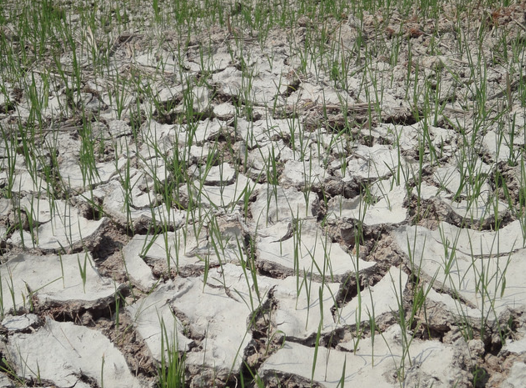
(Photo from Flickr/Marufish)
MANILA – Drought will likely ease by mid-2016 in Mindanao but further affect Luzon, possibly until August this year amid the prevailing El Niño phenomenon’s weakening.
State-run Philippine Atmospheric, Geophysical and Astronomical Services Administration (PAGASA) forecasts drought incidence in Mindanao to decline from 23 provinces to 10 provinces and one province by the end of April, May and June this year, respectively.
“We expect drought there to be over by July 2016’s end,” said Anthony Lucero, PAGASA’s Climate Monitoring and Prediction Section OIC or officer-in-charge.
He noted El Niño’s weakening is paving the way for resurgence and dominance of equatorial waves that bring rain to Mindanao.
“During onslaught of El Nino, development of such waves is suppressed so there’s lesser rain,” he said.
According to PAGASA, drought is a condition marked by three consecutive months of way below-normal rainfall – that’s more than 60 percent less than average rainfall.
Drought can also be five consecutive months of below-normal rainfall marked by 21 percent to 60 reduction from average rainfall condition, PAGASA said.
Between one to five provinces in the Visayas are likely under drought between the end of April and June 2016.
PAGASA’s April-September 2016 forecast showed more of Luzon experiencing drought in forthcoming months, however.
Lucero said the southwest monsoon or ‘habagat’ is the weather system mainly driving rain in Luzon.
He noted ‘habagat’ won’t bring much rain unless enhanced by tropical cyclones (TCs) which are also weather systems causing precipitation.
“For each of April, May and June this year, we’re forecasting zero to one TC only so there’s hardly anything to enhance ‘habagat’ then,” he said.
The country hasn’t yet experienced a TC since January 2016, he added.
Some improvement is possible beginning this July when PAGASA expects then one to three TCs.
PAGASA forecasts Luzon’s Pangasinan, Nueva Ecija, Tarlac, Zambales, Occidental Mindoro and Palawan provinces as likely experiencing drought by April 2016’s end.
Possibly under drought by May’s end are such areas as well as Benguet, Bataan, Cavite and Rizal provinces, noted PAGASA.
The forecast also listed Pangasinan, Bataan, Zambales, Cavite, Rizal, Occidental Mindoro, Oriental Mindoro and Palawan as the likely drought-stricken Luzon provinces by June’s end.
Apayao, Ilocos Norte, Ilocos Sur, La Union, Pangasinan, Cagayan, Bataan, Bulacan, Zambales, Cavite and Rizal provinces as well as Metro Manila are the Luzon areas possibly under drought by the end of July 2016, PAGASA continued.
“There will still be rainfall although at significantly reduced levels,” Lucero clarified, however.
Still likely experiencing drought by August’s end are fewer Luzon provinces – Apayao, Ilocos Norte, Ilocos Sur, La Union, Pangasinan and Cagayan, PAGASA’s forecast showed further.
“By September’s end, we expect the entire country to bedrought-free already,” said Lucero.
PAGASA forecasts a higher two to four TCs for each of August and September.
The agency also expects ‘habagat’ to be more active by 2016’s third quarter.
For 2016, PAGASA sees normal onset of the rainy season despite El Nino.
“Such onset is likely between late May and the first half of June,” Lucero said earlier this week, citing historical data as basis for this forecast.
He expects scattered rain showers in days leading to the rainy season, offering some relief to areas already reeling from drought and the dry spell due to El Nino.
According to PAGASA, the country’s rainy season generally lasts from June to November.